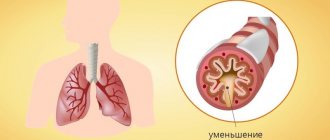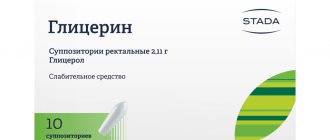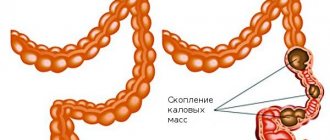Issues discussed in the material:
- Why is constipation more common in old age?
- What is the cause of constipation in bedridden elderly people
- How do medications for constipation differ in terms of degree of impact?
- Which medications for constipation work faster: oral or rectal?
- Is it possible to cope with constipation in older people using folk remedies?
Problems associated with the proper functioning of the gastrointestinal tract have become commonplace in modern conditions. Members of the older generation, who often need to deal with constipation on a regular basis, suffer from them especially often. Difficulties with bowel movements are a natural manifestation of aging, caused by many external and internal reasons. Constipation medications for older people are affordable, safe and gentle remedies to help cope with this unpleasant situation. Medicines or traditional medicine recipes - which is better to use to solve a delicate problem?
Stimulant laxatives
Stimulants of peristalsis (intestinal contractions) are irritating substances that act on nerve endings in the intestinal mucosa 3,4,5,6,7.
Medicines with an irritating effect can act on different parts of the digestive tract3,4,5:
- the small intestine is the zone of action of castor oil and laxative resins;
- The activity of the colon is increased by preparations of senna, buckthorn, rhubarb, sulfur, sodium picosulfate and diphenylmethane derivatives.
They also secrete drugs that are converted into an active form under the influence of intestinal enzymes, so they “work” in both the small and large intestines3,4,5,6.
It is important to remember that if you abuse stimulant laxatives, side effects are possible:
- Diarrhea with cramping pain in the abdomen . Due to diarrhea, the body loses the potassium, sodium and chloride ions it needs. With their deficiency, general weakness is a concern, and due to an imbalance of ions, there is a likelihood of arrhythmias and a decrease in blood pressure5,16.
- The "lazy gut" phenomenon . “Lazy” is a colon that has become an enlarged tube that has lost its tone. Without taking large doses of laxatives, it is unable to contract and move stool. This often happens if the drug accumulates in the colon mucosa and its nerve plexuses, and then destroys the smooth muscles that push feces1,5,16.
Lazy bowel syndrome is manifested by the progression of constipation, which is difficult to correct2,5. Due to rapid addiction7, peristalsis stimulants are not recommended for use for more than 14 days5,16.
Up to contents
Symptoms of persistent constipation
Frequent constipation is often accompanied not only by difficulties and rare bowel movements. They can be characterized by the appearance of mucus and blood in the stool, pain in the rectum and perianal area. This is due to mechanical trauma to tissues from dense stools.
The normal frequency of bowel movements is three times a day to three times a week. The shape of the stool also matters—with constipation, it is denser.
Associate professors of the Department of Internal Diseases Babieva A. M., Bogatyrev V. G., Marinchuk A. T., Koumbatiadis D. G. believe that “constipation contributes to the development of various diseases, reduces quality of life by 20% and is one of the early risk factors the occurrence of pancreatic, gallbladder and colorectal cancer" (Babieva, Bogatyrev, Marinchuk, Koumbatiadis, 2012, p. 52).
Drugs that increase the volume of intestinal contents
Bulk laxatives retain water, swell and stretch the intestinal walls with increased volume. Excessive distension triggers peristalsis and bowel movements are accelerated17.
This group of drugs includes3,16:
- alimentary fiber;
- osmotic laxatives - macrogol, lactulose, salts.
The listed medications are difficult to digest, and some are not digested at all, so they are practically not absorbed through the mucous membrane into the blood17.
Alimentary fiber
Dietary fiber (fiber) is found in bran, seaweed, psyllium seed hulls and flax14. They are also found in vegetables and fruits. Fiber can swell in the intestinal lumen, increasing the mass of feces, which mechanically irritates the intestinal wall3,7. But the effect does not appear immediately, but after 10 days, sometimes you have to wait up to 3 weeks for results6.
To get a laxative effect when using dietary fiber, do not forget to drink enough water3 - 1.5-2 liters per day17, because to increase the volume of feces, fiber must absorb a lot of liquid3,7.
When choosing between wheat bran and psyllium, you should keep in mind that wheat bran can cause flatulence7,16. Therefore, elderly people are advised to use psyllium seeds, which are better tolerated16.
Macrogol
Products based on polyethylene glycol (macrogol) are poorly absorbed substances6,9. Thanks to this property, they are able to retain fluid in the intestinal lumen7,9.
Macrogol does not cause dehydration, but only slows down water absorption14. After taking a laxative, the stool becomes thinner, its consistency improves, and the frequency of bowel movements increases7.
The disadvantage of macrogol is a rather slowly developing effect and intestinal hypotension1, and the main side effect is potentiation of fecal incontinence7. According to the instructions, the recommended duration of taking macrogol is up to 14 days8.
Saline laxatives
Concentrated salts - magnesium sulfate, sodium sulfate, Carlsbad salt8, 9 - act at the level of the small intestine and increase the osmotic pressure in it17. On the one hand, this attracts fluid into the intestinal lumen1,4,5,6,7, and on the other, it retains water in it7,8.
Under the influence of salts, feces become liquid, like diarrhea, and are easily excreted,8,17.
But it is precisely because of severe diarrhea that salt laxatives are not suitable for long-term use. With the constant release of loose stools, imbalances in water and ions may occur17. Also, these drugs are not recommended for people with kidney and heart diseases, because salts can be absorbed into the bloodstream in minimal quantities and retain water in the body14. When using Carlsbad salt, a problem for patients may be its unpleasant taste8.
Lactulose
Lactulose has a laxative effect not directly, but with the help of beneficial bacteria. Using it as food10, 13, bifidobacteria and lactobacilli that live in the intestines secrete substances that act like osmotic laxatives7,10,13,17. But at the same time, severe diarrhea does not occur, because lactulose “works” exclusively in the large intestine15,17.
The laxative effect of lactulose develops gradually:
- with a single dose every 24-48 hours;
- with systematic - after 2-4 hours15.
Since lactulose is not digested, it is practically not absorbed and has no systemic side effects15. Sometimes, if the dose is incorrectly selected, bloating may occur while using the drug15,17.
Up to contents
Folk remedies for constipation for older people at home
Medicinal herbs are recommended to be used only after consultation with the attending physician. Infusions and decoctions made from plant materials have quite a few contraindications, so such products should be used with caution.
Remedies for constipation for older people at home, offered by traditional medicine:
- Compote of dried fruits, which must contain raisins, prunes, and dried apricots. They have a mild laxative effect. Directions for use: leave for 24 hours, drink 0.2 liters in the morning before meals.
- Boiled beet salad seasoned with vegetable oil stimulates contraction of the intestinal tube walls in older people. If gastritis is diagnosed, then the root vegetable should not be eaten.
- Fresh one-day fermented milk drinks - yogurt and kefir - in combination with vegetable oil. To prepare the medicine, you need to add one tablespoon of oil to 0.2 liters of drink.
- It is advisable to include bran in the daily diet of older people to relieve constipation. The recommended dosage is adding three to four tablespoons daily to first and second courses.
- Flax seeds are a good remedy for normalizing bowel movements. Method of preparing the drug: leave one and a half teaspoons of flax seeds poured with boiling water until mucus forms. You need to take half a glass of mucus only, excluding seeds, during the day.
- Elderberries are another folk remedy for constipation for the elderly. To prepare it, you need to boil the washed black elderberries together with sugar for 20 minutes in an enamel pan over low heat. For one liter of berries you need to add one glass of granulated sugar. It is recommended to take three tablespoons of the resulting product before meals in the morning and evening.
Many people have the impression that constipation medications for older people at home are preferable to medications. However, there are also restrictions on their use, so the use of traditional recipes also needs to be agreed with your doctor.
Medicines and traditional medicine for the treatment of constipation in older people have the following general contraindications:
- intestinal obstruction;
- gastrointestinal ulcer;
- intestinal bleeding.
Side effects of taking medications for constipation may include allergic reactions due to individual intolerance to the components, increased gas formation, diarrhea, and flatulence.
Constipation in older adults is a serious problem that needs to be addressed. This can be done by choosing the right medications. Moreover, treatment must be not only effective, but also safe.
We recommend
“Mattresses for the elderly: types, features, selection criteria” Read more
Microclysters
For emergency release of the intestines from dense feces, laxatives in the form of microenemas can be used12. This form includes drugs with a combined mechanism of action, that is, working “together”. They subject feces to peptization (break down dense masses), increase its volume and make it soft2,11.
Microclysters are also used to correct constipation due to the “lazy colon” syndrome2.
Microenema MICROLAX® acts locally and has a mild laxative effect due to the presence in its composition11:
- sodium citrate, which displaces bound water from the feces;
- sodium lauryl sulfoacetate, which thins stool;
- sorbitol, which increases the flow of water into the intestinal lumen.
Thanks to the complex effect of the three components, the laxative effect occurs quickly - on average from 5 to 15 minutes, according to the instructions for use.
MICROLAX® is easy to use; no special knowledge or training is required11. The tube with a tip contains the required single dose of the drug, and the microenema format facilitates the use of a laxative, including for “fecal impaction” or preparation for rectal examination11.
MICROLAX® is approved for use in adults and children from birth11. It acts only on feces, softens them and facilitates bowel movements11. At the same time, the drug is not addictive and does not affect the function of other parts of the gastrointestinal tract.
Remember that laxatives do not eliminate the cause of constipation, they only reduce unpleasant symptoms. Their independent, prolonged or uncontrolled use can aggravate the course of the causative disease if stool retention is one of its manifestations2.
All laxatives should be taken only after consulting a doctor. To get rid of constipation comfortably and effectively, be sure to get examined by a therapist or gastroenterologist. Only a specialist will be able to take into account all contraindications, the risk of side effects and prescribe medications so that they are not addictive.
Combating constipation will require patience and a comprehensive approach. Changing your lifestyle, adjusting your diet, and physical activity will help restore bowel regularity2. It is important to follow the recommendations of a specialist, and if necessary, use laxatives prescribed by a doctor.
The information in this article is for reference only and does not replace professional advice from a doctor. To make a diagnosis and prescribe treatment, consult a qualified specialist
Up to contents
The connection between intestinal microflora and constipation
The consequences of chronic constipation may be disturbances in the balance of intestinal microflora, but there is also an inverse relationship: dysbiosis leads to the development of prolonged constipation. In both cases, the intestinal microbiome should be restored and, at the same time, stool retention should be corrected.
For this purpose, both prebiotics and combination preparations containing them can be used. This is especially true for cases when dysbiosis develops against the background of antibacterial therapy.
Literature:
- Minushkin O.N. Functional constipation: dynamics of ideas, diagnosis, some therapeutic approaches. Medical advice. 2017; 20:92-95
- Turchina M.S. The use of complex laxatives in the treatment of chronic constipation. Medical advice. 2017; 5:77-79
- Minushkin O.N. Chronic constipation (definition, epidemiology, diagnosis): modern drug therapy. Medical advice. 2015; 13: 100-105
- Plotnikova E.Yu., Krasnov K.A. Constipation needs to be treated. Medical advice. 2018; 14:61-66
- Stepanov Yu.M., Vlasova O.N. et al. Negative effects of laxative abuse in medical practice. Gastroenterology. 2018; 52 (3): 168-173
- Luzina E.V. Safety of using laxatives. Russian medical journal. 2014; 5:41-44
- Parfenov A.I. Three options for the pathogenesis and treatment of chronic constipation. Gastroenterology. 2012; 3:7-19
- Plotnikova E.Yu. Modern ideas about constipation. Attending doctor. 08/2015
- Pharmacology of drugs affecting the function of the digestive organs: textbook by A.N. Leventa, L.B. Kuklina, S.G. Alexandrov, N.V. Verlan, L.O. Gutsol, I.Zh. Seminsky, O.V. Shabaturova; GBOU VPO IGMU of the Ministry of Health of Russia - Irkutsk, 2013. -112 pp. 102-103
- Global practical recommendations of the World Gastroenterological Organization. Probiotics and prebiotics. 2021 — 37 p.
- Instructions for use of MICROLAX® microenemas. // Reg. number P N011146/01 // GRLS of the Russian Federation. – URL: https://grls.rosminzdrav.ru/Grls_View_v2.aspx?routingGuid=f052fb31-5426-4bc1-958f-9fce793aa43f&t= (date accessed 05/05/2010).
- Erdes S.I., Matsukatova B.O. and others. Episodic and chronic constipation in children: a step-by-step approach to therapy within the framework of the IV Rome criteria. Pediatrics. Consilium Medicum. 2019; 1:71-76
- Constipation in young children: causes and features of dietary correction O.N. Komarova, A.I. Khavkin (Questions of modern pediatrics. 2014; 13 (1): 114–118
- Clinical recommendations. Constipation in adults (as a manifestation of systemic diseases). Scientific Society of Gastroenterologists of Russia (NOGR), Russian Scientific Medical Society of Therapists (RNSOT) - 2019
- Lactulose: arguments and facts. Yu.O. Shulpekova. EFFECTIVE PHARMACOTHERAPY. Gastroenterology. 5/2011 - pp. 28-71.
- Clinical guidelines: Constipation / Russian Gastroenterological Association. Association of Coloproctologists of Russia - 2021.
- Minushkin O.N. 1, Elizavetina G.A. Forlax in the treatment of chronic constipation: features of therapy for elderly patients / “Breast Cancer” No. 1 - 2006.
Up to contents
Watch in our video which laxative to choose for constipation: tablets, syrup or microenemas
Candles during pregnancy
Suppositories for constipation for pregnant women are selected individually in each trimester, together with a specialist.
The main condition is a gentle effect on the intestines, since while the fetus is in the uterus, stress on the abdominal wall is excluded. The use of oral laxatives that stimulate intestinal filling with fluid is not recommended. Preference should be given to suppositories.
Suppositories that can be used to treat constipation during pregnancy: [9]
- Microlax.
- Sea buckthorn candles.
- RectActive.
- Dulcolax.
- Guttalax express.
- Glycerin suppositories.
- Bisacodyl.
Instructions for use
Rectal suppositories must be inserted correctly. If you take a suppository and immediately insert it into the rectum, it will simply fall into its lower ampullary section, which is why the desired effect will not be achieved. This is why it is so important to administer rectal suppositories correctly.
Instructions:
- Release the suppository from the packaging.
- Lie on your left side with your knees bent. They should be brought to the stomach.
- Relax and with your right hand carefully insert the candle into the anus, but not entirely. It needs to be held in this position for about 30 seconds so that it melts a little under the influence of body temperature.
- Push the suppository completely into the rectum.
When performing the procedure, it is recommended to use gloves or a fingertip. If the candle was inserted with bare hands, they should be washed with soap.










